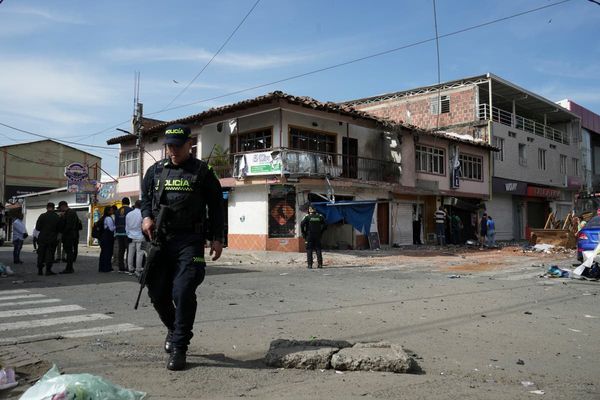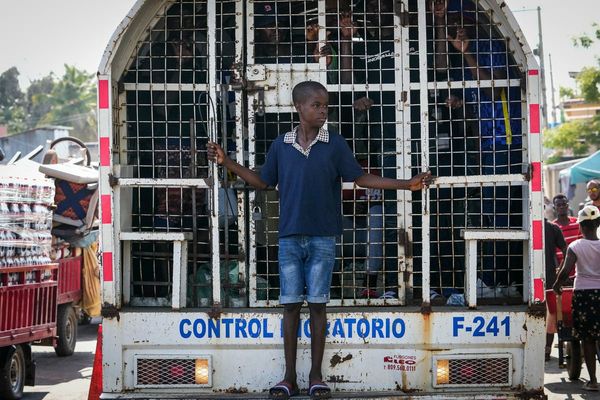
Flood warnings across several New South Wales rivers are still in place, but Sydney is beginning to experience some relief from weeks of extreme weather.
The Bureau of Meteorology issued minor flood warnings for the Wollombi Brook, Lachlan, Macquarie and Lower Hunter rivers on Monday.
Moderate flooding continues at Dandaloo, along the Bogan river and at Louth and Tilpa along the Darling River.
The wild weather in Sydney is predicted to ease after almost two weeks of heavy rainfall and wild conditions. Rain is expected on Wednesday and Thursday, with forecasts of up to 0.4 and 5mm respectively, before tapering off.
However, the respite could be short lived, with predictions of more wet weather later this year.
The Indian Ocean Dipole (IOD) reached its lowest level in six years on Monday, indicating an increased likelihood of above-average rain in south-east Australia over the coming months.
The IOD, which measures the difference in sea surface temperatures on either side of the Indian Ocean, has remained in the negative since May, remaining at or below the negative threshold of -0.4 for eight weeks.
The BoM is expected to declare a negative IOD in the coming weeks, likely bringing with it increased rainfall across the south of Australia, as well as cooler temperatures across the south-east of the mainland.
The bureau maintained its warning for hazardous surf conditions on Monday, with waves peaking on Sunday at 4.8m at Crowdy Head. The warning was still current across all coastal areas in NSW, with large waves possible again later in the week.
The SES warned while weather conditions may have eased, it was important residents returning to their flood damaged homes remained vigilant.
Overnight, the SES responded to 274 requests for assistance, and performed 11 flood rescues, saying they were predominantly of animals trapped in water, but were still urging people not to drive through floodwaters.
So far, the SES has responded to 9,258 requests for assistance, and performed 463 flood rescues during this flood event.
Adam Jones, SES spokesperson, said 169 “return with caution” warnings had been issued across the state, adding it was important that residents take the time to assess their homes.
“The caution is not a free-for-all to run back home assuming everything’s going to be fine. It’s advice that reflects that we’ve gone through and made sure all major power issues have been removed.”
“But we haven’t gone into people’s homes specifically. The floodwater could have caused structural damage, you may have electrical issues, it’s really important that people go in there looking after themselves.”
“We’ve driven down the main streets to make sure they are free, but there is still debris on the roads and on properties.”
He said the SES had conducted over 7,000 building assessments, and found that 790 were deemed uninhabitable.
Jones said it was also important residents took care of each other.
“These are communities that have been hit in some cases for the third, fourth time,” he said.
“So it’s really important [for] people going in there that there’s support from their families, they’re being gentle with each other and looking after their neighbourhoods.”
As the clean-up began, attention turned to the issue of raising of the Warragamba Dam wall.
The NSW premier, Dominic Perrottet, speaking on Nova radio on Monday, said that while the business case was strong, many environmental and funding challenges needed to be addressed first.
“It’s a major engineering feat to raise a wall like that, but the advice we have in terms of the benefits of doing that to those communities downstream is significant,” he said.
“There’s substantial planning issues, environmental issues, because when the water builds up on the wall it then floods the national park”.
“We’ve put something to the federal government on a 50/50 funding arrangement. This project will cost billions of dollars but we’re committed to it. We’ve done the work, it’s with the federal government [and] hopefully we can get it over line.”
But the NSW opposition leader, Chris Minns, speaking to 2GB, said he was unconvinced it was a real solution, suggesting flood levees for small and moderate floods as a means of providing protection for communities facing repeat floods.
He also endorsed a voluntary acquisition scheme funded jointly by local, state and federal governments for people living on flood plains.
“We need to look closely at lowering the maximum capacity of water in Warragamba Dam,” he told 2GB.
“That’s a more affordable and cheaper way of delivering the same outcome”.







